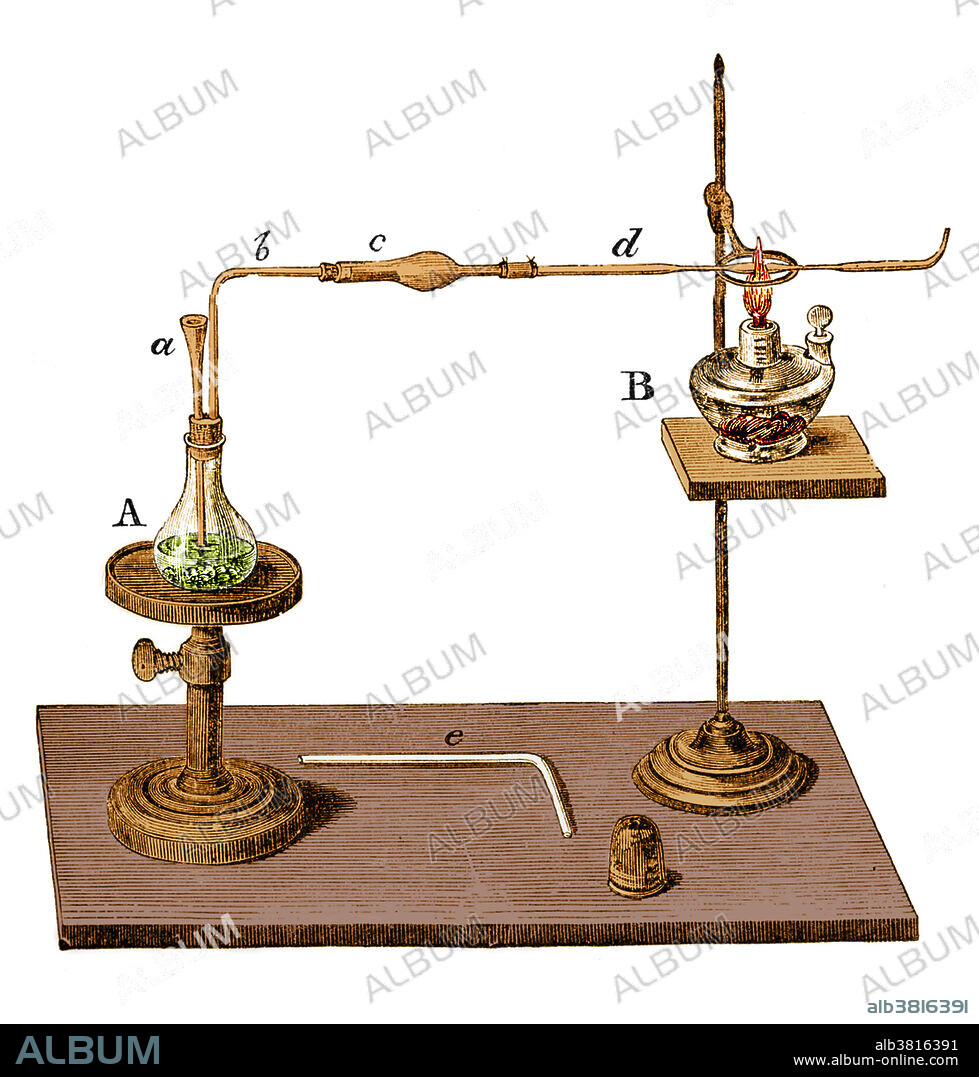alb3816391
Marsh Test Apparatus, 1867

|
Añadir a otro lightbox |
|
Añadir a otro lightbox |



¿Ya tienes cuenta? Iniciar sesión
¿No tienes cuenta? Regístrate
Compra esta imagen

Título:
Marsh Test Apparatus, 1867
Descripción:
Ver traducción automática
Marsh Test Apparatus, Steel engraving, 1867. The Marsh test is a method for the detection of minute amounts of arsenic in foods (the residue of fruit spray) or in stomach contents. The sample is placed in a flask with arsenic-free zinc and sulfuric acid. Arsine gas (also hydrogen) forms and is led through a drying tube to a hard glass tube in which it is heated. The arsenic is deposited as a mirror just beyond the heated area and on any cold surface held in the burning gas emanating from the jet. Antimony gives a similar test, but the deposit is insoluble in sodium hypochlorite, whereas arsenic will dissolve. The test was named for its inventor, the English chemist James Marsh.
Crédito:
Album / Science Source
Autorizaciones:
Modelo: No - Propiedad: No
¿Preguntas relacionadas con los derechos?
¿Preguntas relacionadas con los derechos?
Tamaño imagen:
3000 x 3138 px | 26.9 MB
Tamaño impresión:
25.4 x 26.6 cm | 10.0 x 10.5 in (300 dpi)
Palabras clave:
1867 • ACIDO • ARSENICO • ARTE • COLOR • DEPOSITADOS • DETECCIÓN • DIAGRAMA • DIBUJO • DURO • FORENSE • FRIO • GAS • GRABADO • HIDROGENO • HISTORIA • HISTORICO • ILUSTRACION • INVENCION • INVESTIGACION • JAMES • MEDICO FORENSE • MEJORA • MEJORAR • METODO • OBRA DE ARTE • QUIMICA • SIGLO XIX • SIGLO • SODIO • SULFURICO • SUPERFICIE • VIDRIO • ZINC
 Pinterest
Pinterest Twitter
Twitter Facebook
Facebook Copiar enlace
Copiar enlace Email
Email
